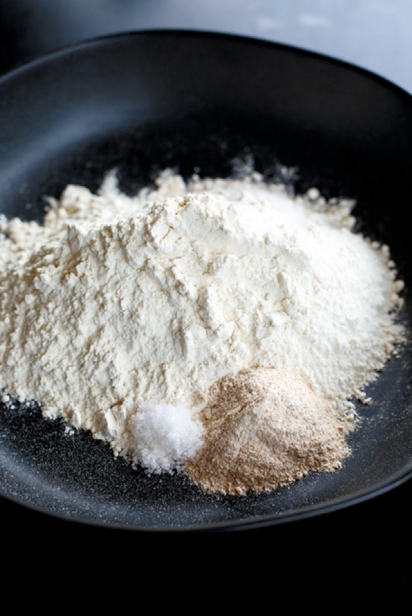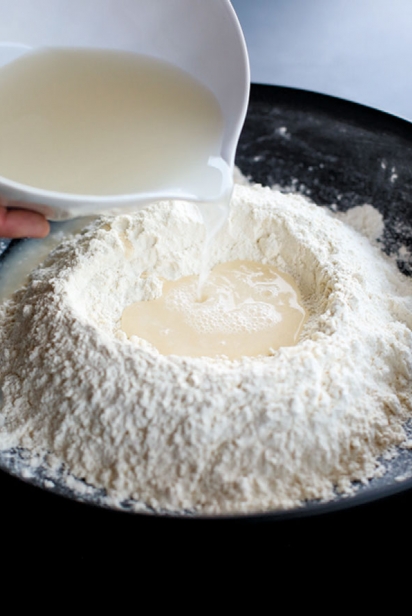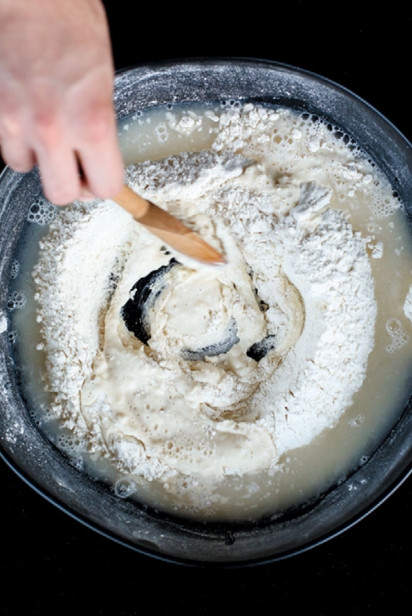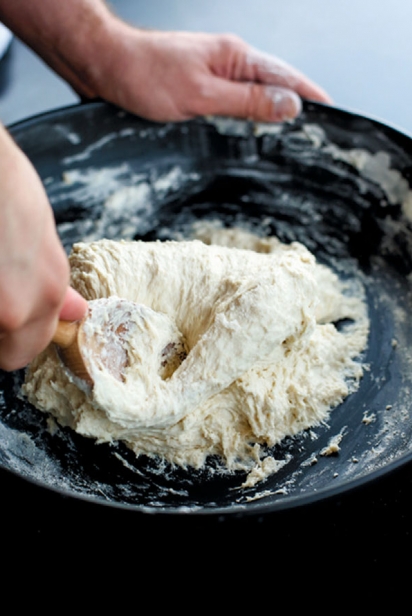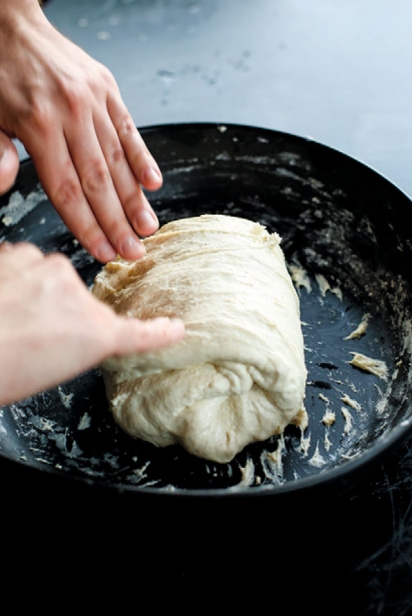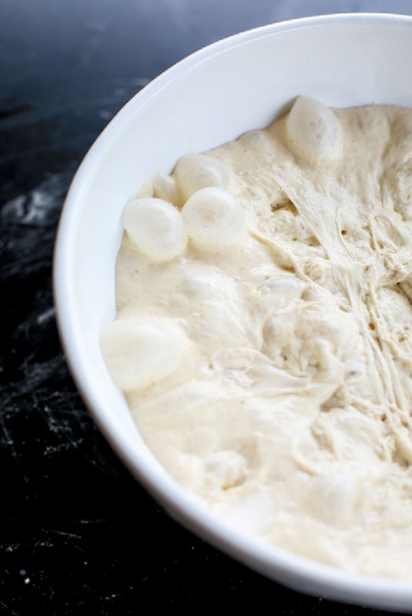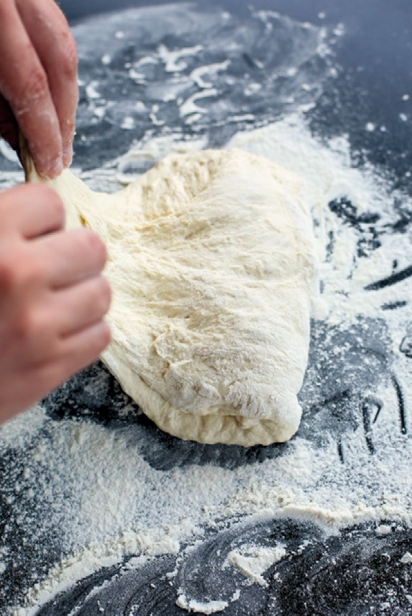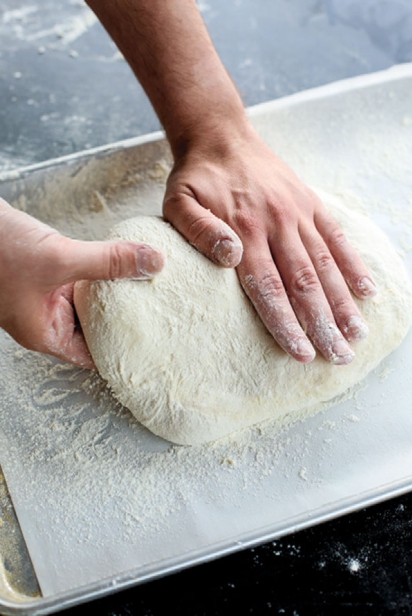Pizza Bianca
Are we called to bake bread by the divine gastronomical voices of Escoffier and Child (n’er a Drummond), or is it something altogether deeper? Fundamental.
Worn molar ancestral gnashing warmly fermented wild grains soporifically drawn from shuddering embers. Maybe not. Why do we make and eat bread? Because it’s good.
Here's my process for one of the best. Pizza bianca. Once you've mastered the technique, this bread makes a killer weekend grilling project.
Okay, here is what you need:
Kitchen scale. No handfuls of this. Thimbleful of that. We are shooting for consistently repeatable bakes where we can learn how much of one thing impacts another. Baking is all about harnessing and controlling variables best to our ability. When you can weigh a suckling pig to the nearest ounce by holding her up by the hind legs you can skip the scale.
Bench knife. Simple and infinitely useful in the kitchen. Under ten dollars. Treat yo’self.
Flours. This is an article unto itself. For now we need good strong (read: HIGH PROTEIN) bread flour from makers like Central Milling and King Arthur. This bread dough is gonna be WET and we need all the strength we can muster. For whole grains, our local Fairview’s Best is marvelous.
Water. A glug from the tap for your windowsill succulent is grand but chlorine is straight up mean to yeast. Fill a large jug with water and let it sit overnight. The chlorine will return to a gaseous state and dissipate. Be gone in the name of Saccharomyces cerevisiae!
Salt. Is it scented by Guerlain or infused with elderflower smoked Manuka honeycomb? Use it elsewhere. Keep it coarse. Keep it kosher.
A hand. The strong one, please. Nothing is more cathartic or better at teaching you how to make swoon-worthy bread than your own hands in the dough. Also, stand mixers are so 2017.
The Process
After dinner the night before you plan to bake you'll mix the dough. It's easy.
Take
410 g water
3 g (. tsp) yeast
Whisk water and yeast together in a very large bowl. Set aside.
In a separate bowl, whisk:
480 g unbleached bread flour
20 g (2 tbsp) whole wheat flour
9 g (1 ½ tsp) coarse kosher salt
Form dry ingredients into a mound and make a well in the center. Pour that yeasty water into the well and stir in broad, confident strokes with your favorite wooden spoon until no dry spots remain and slack dough forms and begins to pull away from bowl and spoon into glutinous strands (1-2 minutes). Clean dough from spoon with wet hands.
Cover with wet cloth and forgot about for one hour.
Quickly running hands under the tap and shaking excess off, return to dough. It will have strengthened incredibly in that last hour. Imagining you had no digits and your hand was just one big webbed paddle, take your wetted paddle and scoop under the dough and bring it up over itself. Turn bowl one quarter turn and continue this motion until you have circumnavigated the bowl four to 5 times. (1-2 minutes) Scrape dough from hands.
Cover with wet cloth and leave for one episode of The Handsmaid Tale.
Repeat the previous step once more, working quickly, efficiently, remembering to keep your hands wet. This is our last chance to establish considerable dough strength before the overnight fermentation so work it a little longer. Instead of using a timer, I like to work the dough for the duration of a song. Romancing dough with Nina Simone has never produced bad bread.
Leave covered overnight on the counter.
[If, in the summers, your kitchen runs on the warm side (higher than 74 degrees Fahrenheit) I’ve found a kitchen towel filled with ice on one side of a cooler with the dough on the other creates a perfect environment for a long, slow ferment. If that is not an option use a scant ½ tsp yeast when you mix the dough]
The next morning liberally dust your counter with flour and scrape out the risen mass. With floured hands, scoop the dough from the north side and fold over onto the south. Then fold south to north. Pat gently. Flour hands and take the east side and fold over ⅔ way towards the west. Repeat west to east, patting the dough gently to ensure the folds stay. Flip dough. Cover with oiled plastic wrap for 10 minutes. Prepare a large sheet pan with parchment paper.
With your bench knife, scrape all around the dough to make sure it hasn't stuck and in one quick, gliding motion slide the knife under the dough and transfer to the sheet pan. Pat out. Cover for 10 minutes with oiled plastic wrap. Uncover and gently press dough out into large rectangle. If it is recalcitrant, don’t force it. Cover again for 5 minutes then continue to press it out to the far corners of the pan.
Cover for 60-80 minutes, until dough is bubbly and pillowy.
20-30 minutes before you plan to bake, preheat your oven to the highest it will go. We’re wanting 500-525 degrees Fahrenheit for a quick bake with minimal moisture loss.
Take ¼ cup of your favorite olive oil and pour it on the dough. Now spread those webbed manatee paddles into scary hand rakes and gently dapple (DAPPLE, people) the dough all over until it resembles the pockmarked cheek of a high school bully. If there are pools of extra virgin olive oil that’s good. Salt the top of the dough if you're feeling extra. (Recommended) Bake on middle shelf for 20 minutes. Remove bread from pan, return to oven, and bake an additional 5-8 minutes. Let cool at least 30 minutes on wire rack before eating.



